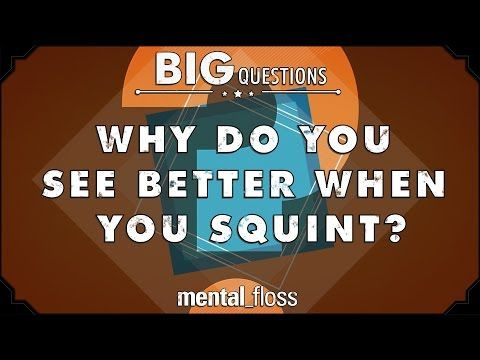Eye Health: Squinting Corrects Blurry Vision By Changing Eye Shape, Limiting Light

At one time or another, most of us have squinted to get a better look at something we otherwise couldn’t see. We know it helps us see the world around us in better detail, but just how exactly? In Mental Floss’s video, “Why do you see better when you squint?,” host Craig Benzine explains squinting improves our eyesight by changing the shape of the eye and limiting the amount of excess light that enters it.
“The whole reason we can see is thanks to our good friend light. While you’re looking at something, light is entering the pupil,” says Benzine. “The lens in your eye lives right behind the pupil and that focuses the light on the retina.”
The retina contains photosensitive cells known as rods (vision in low light) and cones (color vision) that create the image of what we see. Once the light reaches the retina, it encounters a chemical called rhodopsin, which converts light into an electrical impulse that the brain processes as vision. It is within the retina that the fovea — a small, central pit made of packed cones — helps maintain our sharp and central vision.
Our ability to focus on light properly does deteriorate with age, which means that some objects may appear blurry. The amount of light that enters the eye can also propose a problem as it arrives from different angles and must be focused together. This is why some of us squint to overcome blurry vision.
The act of squinting is able to help us see better is two ways. First, it changes the shape of the eye so that the light coming into the eye can be focused directly on fovea, helping us see more clearly the amount of light entering the eye. Second, squinting inhibits unnecessary excess light from entering the eye to make it easier for the eye to focus on less all at once.
Now, squinting in order to focus can also be a sign of poor eyesight and requires a visit to the optometrist. Occasionally squinting won’t permanently damage sight, but it can lead to headaches because it involves the contraction of the facial muscles.



























